Table of Contents
The Passive House – historical review
When was the first Passive House built? Who invented the Passive House? Is the “Passive House” only a new name for “superinsulated homes”? Here are some comments which, although naturally incomplete, try to explain the facts.
Traditional Passive Houses
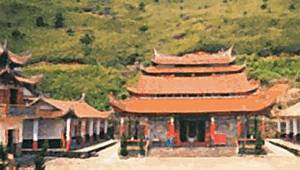 ← Traditional building in Southern China. In this climate, cooling rather than heating, is required.
← Traditional building in Southern China. In this climate, cooling rather than heating, is required.
In many climate regions of the world, if buildings are “sensibly” constructed, no heating is required and neither is active cooling (e.g. in some parts of Iran, on the coast of Portugal, some parts of China…). “Passive Houses” have always been built there, although they weren't known as such. Bo Adamson (1990) was the first to classify these houses as passive houses, and the question whether it was possible to transfer this principle to Europe using technical means gave the idea for a research project concerning “passive houses”. See [Adamson 1992] .
Traditional Passive Houses in Iceland
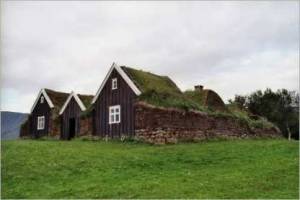 ← Traditional turf houses in Iceland.
← Traditional turf houses in Iceland.
In the Middle Ages, in Iceland people started to build turf houses after wood became scarce. These were Passive Houses, although they didn't have adequate windows or sufficient ventilation.
Timber crisis: In the 17th and 18th Centuries in Europe there was a shortage of wood which was due to extensive deforestation. The solution to this problem was found in the mining of coal. However, in Iceland this was not possible. As we know, necessity is the mother of invention: the icelanders quickly found out that well-insulated houses remain warm by themselves.
The Research Ship "Fram" was a Passive House (!)
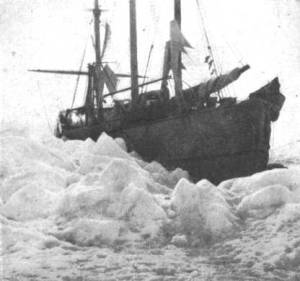 ← Fridtjof Nansen's polar ship, the “Fram”, was a Passive House (1893)
← Fridtjof Nansen's polar ship, the “Fram”, was a Passive House (1893)
The first fully functioning Passive House was actually a polar ship and not a house: the Fram of Fridtjof Nansen (1893).
He writes:
“… The sides of the ship were lined with tarred felt, then came a space with cork padding, next a deal panelling, then a thick layer of felt, next air-tight linoleum, and last of all an inner panelling. The ceiling of the saloon and cabins . . . gave a total thickness of about 15 inches. …The skylight which was most exposed to the cold was protected by three panes of glass one within the other, and in various other ways. … The Fram is a comfortable abode. Whether the thermometer stands at 22° above zero or at 22° below it, we have no fire in the stove. The ventilation is excellent, especially since we rigged up the air sail, which sends a whole winter‘s cold in through the ventilator; yet in spite of this we sit here warm and comfortable, with only a lamp burning. I am thinking of having the stove removed altogether; it is only in the way.“
(from Nansen: “Farthest North”, Brockhaus, 1897)
Systematic Research: Vagn Korsgaard and the DTH zero-energy house
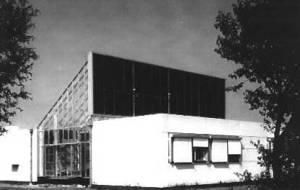 ← The DTH zero-energy house on the campus in Kopenhagen.
← The DTH zero-energy house on the campus in Kopenhagen.
The “DTH zero-energy house” by Prof. Vagn Korsgaard (Kopenhagen, 1973) was also a Passive House. At the Technical University of Denmark, simulations were systematically carried out, designs were optismised and the first zero-energy house was built. The building was later used as a guest house for the university. However, the active solar technology was not renewed after it became defective. As a result, the “zero-energy house” objective was set aside in favour of the “low-energy house”.
See [Korsgaard et al 1978] .
Experiences from this project were directly incorporated into Passive House research from the very beginning.
Working systematically in Germany: Bergmann, Bruno, Hermann, Hörster, Steinmüller, Kersten, Klinkenberg and the Philips Experimental House
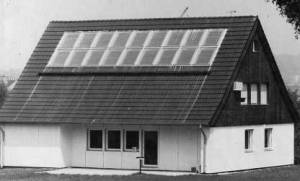 ← The Philips Experimental House (from: Hörster et al))
← The Philips Experimental House (from: Hörster et al))
Parallel to the Scandinavian and American developments, systematic study of energy-efficient buildings was carried out in Germany by Dr. Horst Hörster (research group leader), Dr. Bernd Steinmüller (building models and simulations), Dr. Günther Bergmann, Dr. Richard Bruno, Dr. Wilhelm Hermann, Dr. Reinhard Kersten, and Ing. Klaus Klinkenberg, with funding provided by the Federal Ministry of Research. A super-insulated experimental house, built in 1974/75 in Aachen, equipped with ground heat exchangers, controlled ventilation, solar and heat pump technology and “inhabited” by a computer, served as a test and calibration laboratory for computer models, used to explore the possibilities of energy efficiency and the use of renewable energy sources. These studies showed the potential for energy savings in the order of 10 to 20 times for Europe and America using passive measures alone, thus proving that such measures are an important step on the way to energy efficient buildings. Dr. Bernd Steinmüller has been engaged again in research on efficient buildings since 1997 and continues to be a pioneer, disseminating original ideas worldwide.
Experiences from this project were incorporated into Passive House research from the very beginning.
Read more: Philips Experimental House Research 1974ff: Passive versus Active Measures in Europe & America. See also [Hörster 1980] .
Pioneers in North America: William A. Shurcliff and Wayne Shick
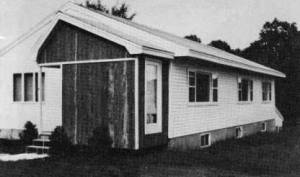 ← Example of a “super-insulated home” in the USA
← Example of a “super-insulated home” in the USA
A whole series of North American developments (“super-insulated houses”) in the 70s and 80s were very close to the Passive House. William A. Shurcliff (1981) authored many publications on this subject. One of the early examples is the “Sasketchewan Conservation House”, a still occupied building demonstrating the benefitis of superinsulation.
This work was an important basis for low-energy houses and Passive Houses in Europe.
See [Shurcliff 1980] .
The Passive House at an altitude of 2164 m: The Rocky Mountains Institute (rmi) by A. and H. Lovins
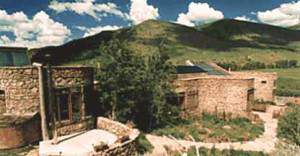 ← The “Rocky Mountains Institute (rmi)” by A. and H. Lovins. (Foto: rmi)
← The “Rocky Mountains Institute (rmi)” by A. and H. Lovins. (Foto: rmi)
Amory Lovins, who is well-known for his publications about alternative energy, did not stop at the theory. He built an extremely well-insulated solar passive house in Old Snowmass in Colorado, at an altitude of 2164 metres. Tropical vegetation flourished in the winter garden and the stove was seldom used.
These experiences gave the Passive House research the assurance and confidence that physics works in practice too. A. B. Lovins visited the Passive House in Darmstadt Kranichstein in 1995. It was he who suggested that the Passive House should be considered not just as a research project, but also as the energy standard of the future. See [Lovins 1978], [Carlock 1985], [Weizsäcker, Lovins 1995] .
In 2011, at the International Passive House conference, this building was awarded the "Passive House Pioneer Award".
The "Nulli" in Dörpe
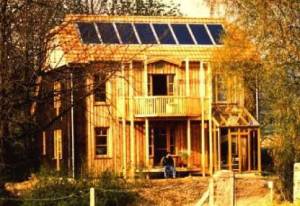 ← The “Zero-energy house”1) in Dörpe near Hannover.
← The “Zero-energy house”1) in Dörpe near Hannover.
The “zero-energy house” by Erhard Wiers-Keiser and the organisation for “Ecological Future Workshop for Minimum-energy and Zero-energy Houses e.V.” (1989) was calculated as having smaller demand values than a Passive House, but unfortunately the consumption values during operation were higher. Problems were due to reduced airtightness (non-reinforced building board), the insulation shutters on the inside and the solar storage technology. The annual 10 m³ solar storage was later removed to make space for a new wing, but the house was still used as an “almost Passive House” as before. Robert Borsch Laaks contributed significantly to the details. See [Hinz 1994] .
Many members of the Passive House Research Group were involved in this project.
Significant problems with the earlier houses were:
- The lack of awareness regarding the importance of permanent airtightness. Information about this was gained above all in Sweden. Prof. Arne Elmroth is one of the leading pioneers in this field.
- The lack of good solutions for high performance windows (Lovins: “We should have used a better thermal separation for the window frames.”) Due to this the windows were often small or they had to be elaborately covered with temporary insulation. These were the reasons why this approach was not widely accepted.
- The lack of reliability of the energy efficiency of the technology used. In many projects the effect was that of “technological christmas trees”: complicated technology which either didn't function, or didn't function for long.
It's also important to mention the developments and experiences of the pioneers in Switzerland (e.g. Conrad U. Brunner, Ruedi Kriesi and Josef Jenni) and in Austria (Helmut Krapmeier, Richard Caldonazzi, Sture Larsen, Josef Kiraly ).
Super-low-energy houses by Hans Eek
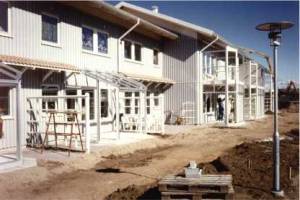 ← Ingolstadt-Halmstadt: Low-energy houses (30 kWh/(m²a) heating demand) in two countries, by Architekt Hans Eek (1985)
← Ingolstadt-Halmstadt: Low-energy houses (30 kWh/(m²a) heating demand) in two countries, by Architekt Hans Eek (1985)
Sweden paved the way for the success of the “low-energy house”. Experience with complicated and unreliable technology had taught them the right way to do things: a high level of airtightness, very good insulation, good windows, reliable mechanical ventilation. Hans Eek is a leading pioneer in Sweden - the experiences with construction research are directly reflected in his life story: from the “technological christmas tree” and the super-low-energy house to the Passive House. In the picture, terraced houses of the German-Swedish Ingolstadt-Halmstad Projekt can be seen.
These aren't Passive Houses, but it's only a small step further to the Passive House.
Hans Eek was and is a cooperating partner for all stages of the Passive House development.
The energy-autarchic solar house in Freiburg
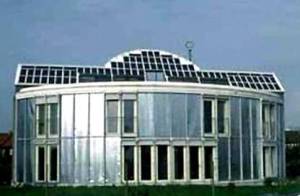 ← The energy-autarchic solar house of the ISE in Freiburg. The building is used as a Passive House today.
← The energy-autarchic solar house of the ISE in Freiburg. The building is used as a Passive House today.
The “energy-autarchic solar house” (ISE, Freiburg 1991/92, Wilhelm Stahl) was built around the same time as the Passive House in Darmstadt. It is also very similar to the Passive House. The sometimes very complicated autarchic supply technology with hydrogen storage was not operated any more after the end of the measurement period. The passive technologies and the heat recovery proved to be very effective. Today the ISE tests the efficiency of Passive House compact heating units under practical conditions in this house.
During the project construction, the Passive House Group exchanged information with the ISE and Wilhelm Stahl, and mutual support was provided by each.
The Passive House in Darmstadt Kranichstein
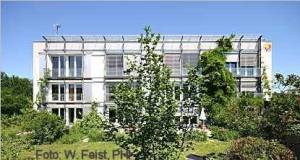 ← Passive House in Darmstadt Kranichstein, southern side
← Passive House in Darmstadt Kranichstein, southern side
A team of scientists participated in the “Passive House Preparatory Research Project” – an international cooperation in which Bo Adamson and Gerd Hauser were also involved. With funding by the State of Hesse, a systematic research on the requirements for energy-efficient buildings has been done and prototypes of new building components were developed and produced: including insulated window frames, reduced thermal bridges and CO2-regulated ventilation.
In 1990/91, based on plans by Prof. Bott/Ridder/Westermeyer, four terraced house residential units were built by for families in a joint venture: se detailed Passipedia article here. The houses have been occupied since 1991. An accompanying monitoring programme provided information about super-insulated building components, windows, ventilation heat recovery, user behaviour, indoor air quality, amount of internal heat sources and much else.
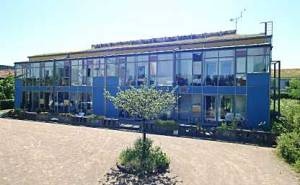 ← Passive House Kranichstein, northern side
← Passive House Kranichstein, northern side
With normal use of the homes, this project confirmed the faultless functioning of all essential components – uninterruptedly to this day (…still true in March 2014). The measured energy consumption for heating has remained less than 10 kWh/(m²a) since 1991, the savings in comparison with traditional buildings are higher than 90%. Very good indoor air quality has always been monitored, and the high level of thermal comfort was confirmed by field measurements and user surveys.
Most of the components (e.g insulated window frames) were manually-produced unique solutions; the decisive reason for the later production series of these quality building components was their flawless performance.
See [Feist 1992], [Feist, Werner 1994] .
Conclusion
As described in Passivhaus-Definition page, the Passive House is a concept for paramount thermal comfort with a very low heating demand - the precise definition is:
“A Passive House ist a building, in which thermal comfort (ISO 7730) can be provided solely by postheating or postcooling of the fresh air flow which is required for good indoor air quality (DIN 1946) - without using recirculated air in addition.”
This is a purely functional definition which doesn't contain any numerical values and is valid for all climates. From this definition it is clear, that the Passive House is a fundamental concept and not a randomly set standard.
Passive Houses have not been “invented” by anyone – in fact, the Passive House principle was discovered.
In the past, very often these principles were applied before one even became aware of them. Many institutions and persons were involved in the discovery of this principle, and every single one of them contributed an important piece to the puzzle. Each list is incomplete, because without even realising, scientific work is always based on the results of previous work. It was always necessary to have opponents too: people who made it clear that they didn't much approve of this approach. They helped to sharpen the mind and work out the principle more clearly.
The “Passive House” is not just a new name for a “super-insulated house”, although in cold climates a Passive House is usually very similar to such super-insulated houses. The Passive House concept doesn't even dictate the technique with which the functional objective is to be achieved. Even the “passive solar homes” of older origins could be the basis for a functioning Passive House. For a long time, “passive solar homes” and “super-insulated homes” were perceived as competing concepts by their proponents. Robert Hastings, the pioneer of the American “passive solar architecture”, helped considerably to overcome these contradictions.
The most essential point is: To be aware of the performance character of really comfortable and energy efficient buildings. To be able to design such a building, it's important to calculate the performance in advance - prior to construction. The performance includes thermal comfort (during Winter and during Summer), indoor air quality and energy consumption. In our century the tools for a reliable calculation of these performance characteristics are available - this is the key for a good design. And it is the key to passive house construction - because the PHPP tool has been made available for all professionals in the field. This tool is reliable, easy to use and transparent; it can be used as the backbone for the communication between the investor, the architect, the engineers and the people on the construction side. All important issues can be dealt with - whether the design of the ventilation system, the optimization of insulation layers, how to avoid thermal bridging and how to guarantee good indoor comfort. That is the first and most important reason, why passive house now can be designed and built by every architect and builder (well, those who are motivated to do it).
The second reason is the availability of suitable products and reliable data about the performance of these products. Before the passive house development there have been no windows with U-values lower than 0,85 W/(m²K) available on the market - now there is a increasing number of producers with Hundreds of certified windows of such a quality. Before the passive house development there have been no air-to-air heat recovery systems with reliable heat recovery rates higher than 80% available. Now there are also Hundreds of certified products on the market, produced by enterprises in different countries. The information about these products has been published - the performance of such products is at least some factor two better than the performance of former standard systems. That, together with reliable data available from certification of the components, creates the background for a successful design of really energy efficient buildings.
Perspective
It's always interesting looking back. However, the boundary conditions in the past have been completely different - there have been not at all this many people on Earth and the influence of man's action was not nearly as high on nature as it is now. So, looking back might be interesting to get some ideas - but it can never be the all guiding principle (“You can't drive looking only into the back mirror”). We have to keep that in mind, there never was a “golden old age”. If you ask historians, you will see: From the small population which existed at any time earlier to modern times, again only a small fraction has had an almost comfortable living style (those have built the aristocratic class). So, at the end, it is not only a pleasant perspective just looking back!
The constructive perspective is looking forward: With the scientific knowledge we have now, we could (!) use technology wise and sustainable - which will fit our needs, the needs of say same 9 or 10 Billion humans -, will not require unsustainable resources and will not change the natural energy and material flows too much, not so much, that it will be of any danger. Yes, one also may discuss what is really a “demand” - but it's obvious that this could be a dangerous path if it will end in distribution fights. So, using science in a wise and clever way will be the best solution available. And that means making science available for as much as possible humans.
Although it might sound surprising, this is possible. We can reduce energy consumption by more than a factor of 5 (compared to average per person in the European Union) without reducing comfort and prosperity: see for example the Passive House concept and "Energy efficiency".
If we search back in history, we find some application of this concept - with much less advanced technology which has been available in these earlier times. So, there are traditional passive houses (see the upper part of this article). These have been solutions out of desperate hardship - thus, some of these solutions have been coined with the hardship that created them, so it might even be a danger to refer to these. There are such controversies going on: Some humans fearing a solution which is more efficient and uses less energy, because they fear that this might reduce their prosperity. But these fears are only based on missing information - that is, why the information has to be made available.
So, it's a good idea to look forward and to do research and development for even better solutions. That's what the passive house community is all about.
Literature
[Adamson 1992] Adamson, B. “Passive Climatisation of Residential Buildings in China”, Lund University, Report TABK-92/3006 (1992)
[Carlock 1985] Carlock, M.: A Solid Stand on Solar Battlements; in Solar Age, Jan 1985, S. 19-22
[Feist 1989] Feist, W.: Forschungsprojekt Passive Häuser; Darmstadt 1989. Kommentierte Neuauflage 1995
[Feist 1992] Feist, W. (Hrsg.): Bauvorbereitendes Forschungsprojekt Passive Häuser; Endbericht, Darmstadt 1992
[Feist, Werner 1993] Feist, W. und Werner, J.: “Erste Messergebnisse aus dem Passivhaus Darmstadt Kranichstein”; gi S. 240-249, 1993
[Feist, Werner 1994] Feist, W. und Werner, J.: “Gesamtenergiekennwert < 32 kWh/(m²a)”; Bundesbaublatt 2/1994
[Feist 1997] Feist, W.: “The Passive House in Darmstadt Kranichstein: Planning, construction, Results”; PHI, Darmstadt/Germany 1997.
[Hinz 1994] Hinz, E. et al: Messdatenerfassung und Auswertung beim ökologischen Nullenergiehaus Dörpe, Institut Wohnen und Umwelt, Darmstadt, 1994
[Hörster 1980] H. Hörster (Hrsg.): Wege zum energiesparenden Wohnhaus; Hamburg, 1980
[Korsgaard et al 1978] DTH-Nul-Energihus; Technical University of Denmark, 1978
[Lovins 1978] Lovins, A. & H.: Sanfte Energie, Hamburg 1978
[Nansen 1987] Nansen, Fridtjof: Farthest North, Volumes I and II. London: Archibald Constable & Co., 1897
[Shurcliff 1980] Super Insulated Houses and Double Envelope Houses, Brick House, Andover, 1st edition 1981
[Weizsäcker, Lovins 1995] Weizsäcker, E.; Lovins, A. & H.: Faktor Vier, München 1995
